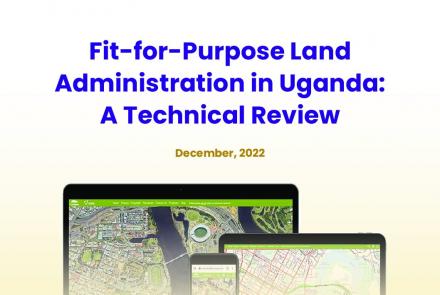Sustainability of land use
“We all have a stake in sustainable land use, but the aims and activities of stakeholders are often in conflict” FAO
“The Sustainability of the global environment and human settlement will not be achieved unless among other things, human settlements in both urban and rural areas are economically buoyant, socially vibrant and environmentally sound, with full respect for cultural, religious and natural heritage and diversity” The Habitat Agenda.
“Continued mismanagement of the earth’s nature resources can only lead to ever greater land degradation and human suffering. We urgently need a strategy that will permit both development and conservation. The starting point of that strategy is the land itself” FAO
Land comprises all elements of the physical environment to the extent that these influence the potential for land use. Thus, land refers to soil, land forms, geology, climate and hydrology, the plant cover and fauna. Uganda is a natural resource dependent economy with land as the most critical of the natural resources. The nature of utilization under which land is currently put or the possible kinds of uses under consideration for the future determines the level of sustainability that the land resource attains. Currently, despite the gross endowment with the natural resource, Uganda’s land resources are under tremendous pressure arising out of the need for social and economic development, high population growth rate, poor land management and planning, over exploitation of the natural resources, especially the vegetation cover, all resulting in land degradation and reduced land productivity among others.
Uganda’s terrestrial resources consist of four distinct ecosystem types: shrub lands, savannah and grasslands covering 44 per cent of the total land area, cropland/natural vegetation mosaic covering 35 per cent, wetlands and water bodies covering 16 per cent and forests covering four percent with one percent of the land being barren or with sparse vegetation (UNEP/IISD, 2005). Specifically terrestrial systems consist of land, soils and agriculture; forestry and woodland resources; wildlife resources; and mineral resources.
Land resources include agricultural land and soils that are public resources managed by the Government, and private resources owned and managed by individuals, communities or cultural kingdoms in Uganda. The land resources form the main asset for the derivation of livelihoods by Ugandans. Nearly 80 per cent of the Ugandan population relies on land, agriculture and soils for their primary livelihoods (UBOS, 2006), of which forestry and woodland resources contribute about six percent to Uganda’s Gross Domestic Product (UBOS, 2006).
Uganda's wet and dry grasslands are found largely in the “Cattle Corridor”, which extends from Moroto and Kotido Districts in the north-east through Lake Kyoga's flat lands to Masaka, Rakai and Mbarara Districts in the south-west, with smaller parts scattered throughout the country. This area is referred to as the "Cattle Corridor” because of the pastoral livelihoods that dominate the zone. Tropical grasslands constitute important natural systems and they provide several ecosystem services that support life.
For example, they are a source of food for humans and their animals and act as a means of maintaining essential life support functions (Kisamba-Mugerwa, 2003). The general support functions, the services and products we derive from tropical grasslands are diverse and the indigenous people and communities that live on the fringes of these grasslands rely on them to graze their animals that in turn provide them with food. They also rely on them for shelter. The well being of these communities therefore extensively depends on these grasslands.Approximately 80 percent of the country’s population lives in rural areas and depends on agro-pastoralism for its food and income (NEMA 2001)
It is assumed that the Land Act, 1998, by underwriting tenure security seeks to increase the incentive for the poor to invest in land improvements and expand their production and income. It is further assumed that landowners unable to use all their land will have the confidence to rent it, rather than hold it in its unproductive state because of fear that they will not get it back.
However, the relationship between tenure security and on-farm investment in is the subject of much debate in a lot of literature. In cases where a significant relationship is found to exist between enhanced on-farm investment and security of tenure, this need not mean that they are causally linked. Farmers may tend to invest in land in order to secure their land rights. In other words, security of tenure may not stimulate investment, but follow from it. However, whether the frame of reference for the system of land tenure be communal or individual, registered or unregistered, there is widespread circumstantial evidence that more secure property rights are linked to a higher propensity to invest in tree planting, manuring, soil and water conservation and other farm improvements.
Due to growing economy, external and internal pressure on rural land, rural land resources are becoming increasingly contested leading to increased competition and conflict. Land use practices therefore helps to carter for both anticipated and unexpected future needs.





